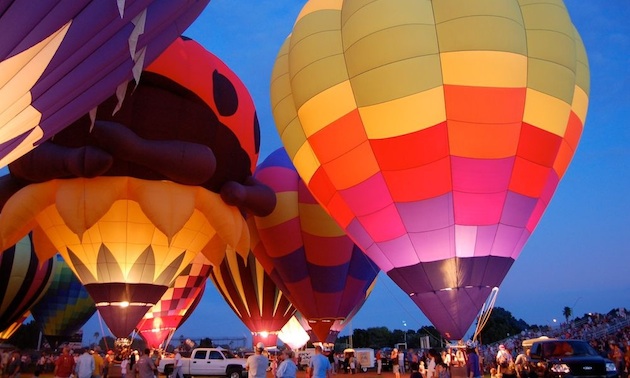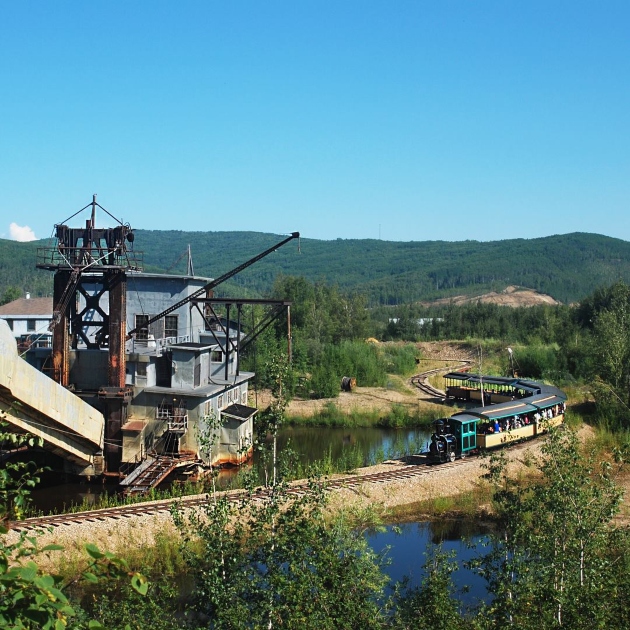The very best of Yuma
The city once known as the "hellhole of the West" has more than desert heat

Back in the days when the West was wild, Yuma, Arizona, was known far and wide as the Hellhole of the West. Luckily for us today, Yuma is now a wonderful winter destination for RV snowbirds, and they come from far and wide to enjoy the area's many delights.
Yuma's territorial prison
How does a city get the reputation for being a hellhole? Well, Yuma's ghastly and barely humane prison was pretty fearful. Now a state park, it makes a great day trip. Visitors are greeted by a whimsical skeleton dressed as a prison guard and are encouraged to roam through the grounds. Built in 1876 by the convicts, it housed more than 3,000 prisoners over the next 33 years.
The frightening nickname it acquired in the late 1800s was no joke for the inmates, however. The cells were essentially iron cages covered with huge granite blocks. Thick strips of strap iron made up the cage walls, ceiling and floor, and each cell featured a double cage door. The locking mechanism on each door was accessible only from the outside, and even though a small man might have been able to slip his wrist through the caging, the door locks were well out of arm's reach on the outer walls.
The informative video presentation is excellent (if a bit faded from so many showings) as is the museum's extensive presentation of artifacts and fascinating prisoner histories. A walk among the menacing cell blocks sent shivers down my spine. The prisoners were kept six to a cell, in bunks. In time, the prison became overcrowded. Then more than six had to live in a cell, sharing a single chamber pot that was emptied just once a day. This is hard to imagine, given the typical 115-degree summer heat, although the "country club," as the prison was known to non-inmates, did have a ventilation system as well as a hospital and library.
The original beds were wooden, making ideal breeding grounds for bedbugs who feasted on the prisoners at night. Eventually the wardens took pity on the prisoners, burned the beds and replaced them with iron frames. But pity only went so far. Attempting a breakout, eight escapees were shot and killed as they tried to slip out the front gate. Standing in the watchtower, it is easy to see how fruitless their effort was; anyone dashing out the gate would have made easy pickings for the guards at the time.
For those disruptive souls who got out of line, the "dark cell," a windowless granite room housing a five-by-five-foot cage, was their reward. The steel floor of this cage was suspended a little above the ground, eliminating the need for a chamber pot. Instead, the floor beneath was cleaned every few months. The only light came from a tiny vent shaft in the ceiling. One man spent 104 days in this cage, after which he became a model prisoner. Two women spent some time in there as well. I'd had enough after only one minute, and that was looking in!
Old Town
Not all of Yuma's territorial residents were prisoners, and the city offers much historical charm for modern visitors. The Old Town district features many lovely adobe brick homes. Adobe walls are exceedingly thick, and the homes are trimmed with beautifully glazed tile. The Mexican influence is unmistakable, and the architecture is referred to as Anglicized Sonoran. The massive, thick walls keep the intense summer heat outside and give the windows and doors a deeply recessed, shadowed appearance.
A stop at the Garden Cafe is a must. Set on a slope, the outdoor tables are nestled under pretty shade trees and vines, and tucked into terraced nooks and crannies along winding stairs. This unique arrangement gives diners a private, exotic outdoor setting for a relaxed meal. Caged blue-fronted Amazon parrots and sun parakeets add an occasional tropical squawk to the air as well.
Lutes Casino is another popular spot. Simple on the outside, the inside of this restaurant bursts with nostalgia. Old posters and other relics of 20th century American history line the walls, and the chrome and vinyl stools hark back to another era. A favorite watering hole with the military stationed at the nearby Marine Corps Air Station Yuma, the cafe features poignant letters on the walls from soldiers stationed in the Middle East saying how much they miss Lutes' El Especial hotdog/hamburger combo platter and the special camaraderie found there. At times the base is open for tours as well, but we saved that excursion for a return trip.
Colorado River Balloon Festival
Our Yuma visit coincided with the Colorado River Balloon Festival in November. Colourful balloons take to the skies in the crisp early morning air. We wandered over to the festival in the late afternoon to watch the evening Balloon Glow. Every inch of the field was covered with balloons waiting to be inflated. Balloon chase vehicles were scattered between the large baskets and immense stretches of colourful material on the grass. Some balloons bore corporate sponsors' names and others belonged to balloon clubs and private enthusiasts. All around us we heard the roar of gas fires as balloonists held one end of each balloon open and aimed a huge flame inside to fill it with hot air. Soon the balloons rose unsteadily up off the ground, staggering and shuddering like ghosts suddenly infused with life. The handlers tied the baskets down so they wouldn't drift off into the sky.
Some spectators wandered among the balloons in the field, dwarfed by the towering bubbles of colour. Others found seats in the stadium, where they could survey the scene from a distance. An announcer kept the balloonists' blasts of hot air synchronized so that all the balloons would glow at once. Too much hot air and the baskets would strain against their tethers, trying to fly. So the glows were kept fairly short, allowing the balloons to stay safely attached to terra firma.
Natural beauty
During the daytime we explored the pretty desert scenery on the outskirts of town. This is not the dramatic Sonoran Desert of Tucson and Phoenix where the famous saguaro cactus rule, but a more muted subsection of Sonoran Desert called simply the Yuma Desert. The surrounding hills offer a dramatic, craggy and barren backdrop at sunrise and sunset. We hiked into the foothills at the far eastern end of town, passing endless ocotillo cactus as we walked. Their thin branches, tipped with flaming flowers, reached for the sky in broad bouquets. The last half mile of the hike went almost straight up, leaving our lungs aching. But the view from the top, of the surrounding patchwork of green farmlands, was worth the trek. A glance through the guest book at the top made us smile. Everyone noted they were gasping for air by the time they wrote their signature, and all were happy to sit down at last on the park bench and take in the view.
Farmland dominates the eastern end of Yuma. Gazing down from the mountains or driving alongside the farm fields, we felt as though we were looking at the makings for a mammoth mixed green salad. Lettuce, spinach, kale and other healthy greens grow in tidy rows. Fields are harvested in rotation, and a steady stream of labourers work down the rows, transforming mature plants into boxed and labeled produce as they go. By night the crop planes circle incessantly, dousing the fields with fertilizer and pesticides. For us it was a gentle reminder of exactly where our produce comes from, especially when we saw the same labelled boxes at the supermarket.
Despite its desert setting, Yuma boasts some scenic lakes as well. Riding our bikes along the dirt paths lining the irrigation canals, we discovered beautiful Redondo Lake set against some dramatic desert mountains. A lone boat drifted on a mirror of water. A few miles to the north we came upon Mittry Lake, where marshy shores attract water birds and fishermen appeared to be getting a good catch.
We found that besides warm winter weather, Yuma offers some unique experiences, whether a slice of southwestern territorial history, a colourful balloon celebration or scenic outdoor vistas.
For more ideas for great snowbird RVing destinations as well as tips for living the RV lifestyle, please visit our website roadslesstraveled.us
Emily Fagan Profile
Emily Fagan and her husband Mark have been traveling full-time since the spring of 2007 when they left their home in Phoenix, Arizona, and drove off to a life of adventure on the road. Since then they have chronicled their journey with beautiful photography and entertaining stories on their website http://roadslesstraveled.us where they also offer loads of tips about RVing. Criss-crossing the North American continent several times, they have explored the western US states in depth. For the past few winters, they have taken their voyage to the sea as well, and they have cruised the entire western coast of Mexico from the US border to the Guatemala border in a sailboat. Avid photographers, they have published 40 feature stories and twelve cover photos in the major RVing and sailing magazines. For those that dream of sailing, they have also just published the first two DVDs in a 6-part series called Cruising Mexico Off the Beaten Path (link to http://roadslesstraveled.us/cruising-mexico-dvd-series/).






